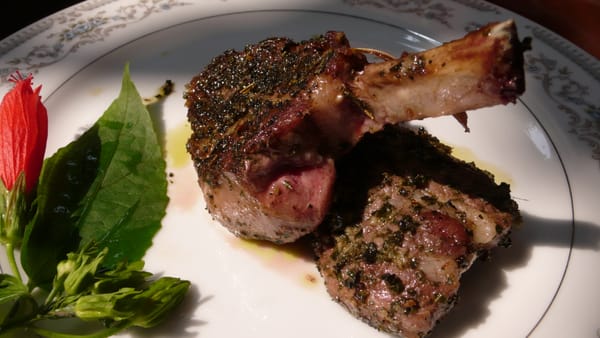This article, originally published by tea expert Mr. Chi Tsung-hsien in Ming Pao Monthly, presents a fascinating exploration of how tea enhances dining experiences at Michelin three-star restaurants.
Chi Tsung-hsien | Tea Expert
Multi-course meals with tea at the center undergo a luxurious transformation... Try the Oolong, Tie Guan Yin, and Wuyi tea you have on hand, and enjoy the surprising flavors of tea pairing with meals.
In March of this year, Japan's legendary restaurant "Chawagashi" made a brief appearance in Taipei, offering two sessions a day at a price of 8,000 NTD each, with each session fully booked. What is the allure behind it?
Chef Tomoya Kawata, the mastermind behind the tea-infused cuisine, explains that he applies the concept of "Wine Pairing" (the art of pairing wine with food) to tea. His goal is to create a new "Tea Pairing" experience that elevates the flavors of Japanese, Taiwanese, and Chinese teas, offering a unique dining experience that rivals Michelin three-star meals. The perfect pairing: Oolong tea paired with a rich dish, where layers of flavors unfold in a surprising way. After the tea soup is consumed, the flavor lingers gently with a gray lotus cake, providing a perfect aftertaste.
Having experienced tea-infused meals at Michelin three-star restaurants in Spain, the U.S., and Japan, I can attest to the power of tea to transform dining. One notable experience was at the renowned Japanese restaurant "Kanda" (神田), which has held a Michelin three-star rating for 18 consecutive years. Chef Hiroyuki Kanda, who serves kaiseki-style tea-infused dishes, uses Japanese tea utensils to serve sweet persimmons after the meal to avoid disrupting the natural flavors of kaiseki. He explains: "Japanese cuisine does not require alcohol to enhance its flavors; tea clears the lingering aftertaste of Japanese dishes with its subtle freshness."
At the three-star Michelin restaurant Restaurante Martin Berasategui in Spain’s Basque region, chef Martin Berasategui is known for his creative and surprising dishes. One standout dish is a smoky sweet potato tea cake, which shocks the palate with its smoky, fresh flavor. The key here is the tea's warmth, which removes any fishy taste, leaving a dry throat and a luxurious aftertaste.
At Eleven Madison Park in New York, a Michelin three-star restaurant also ranked among the world's top 50, I once brought a Ming Dynasty teacup to the restaurant and told them, "The touch of a cup conveys aromas better than glass." The consultant from Denmark was amazed and noted that Europe is beginning to appreciate Eastern teacups and tea pairings. The teacup enhances the flow of sweet wine aromas, and the tea's fragrance and the wine's sweetness harmonize perfectly, with tea becoming the star of the pairing!
In October 2021, Michelin awarded its first-ever three-star rating for a restaurant that prominently featured East Asian tea alongside French cuisine.
At Michelin three-star chef Anne-Sophie Pic’s restaurant, a Taiwanese guest recommended pairing Pu’er tea with a French appetizer. The chef opted for a fragrant Eastern fruit aroma, pairing it with honey-sweet French appetizers that transitioned from sweetness to acidity. I paired a salted dried scallop with Taiwan's "Honey-scented Oolong," which beautifully enhanced the deep, multi-layered flavor of the scallop.
In the spring of 2023, I visited "SEZANNE," a newly awarded three-star restaurant in Tokyo’s Four Seasons Hotel. Chef Daniel Calvert merges Chinese and English culinary styles, pairing both wine and tea with his dishes. His selection includes the top wine from Chateau Haut-Brion, paired with tea-infused dishes. The colors of the meals and drinks are gorgeous, and one highlight was the "Rainforest Mango" pairing with Pu'er, white tea, and honey tea. The tea soups, paired with mango, longan, and Tainan sweet grass soup, provide an unexpected but delightful surprise.
Tea pairing has become a versatile element in dining experiences, from Japanese, Chinese, Spanish, to French Michelin three-star restaurants. Multi-course meals centered around tea offer a gorgeous transformation. Try pairing your Oolong, Tie Guan Yin, and Wuyi tea with meals for an unexpected and delightful tea-infused dining experience. Dining is no longer just about food and drink; through "tea pairing," it becomes an art of flavor and aroma.
Source: Ming Pao Monthly


